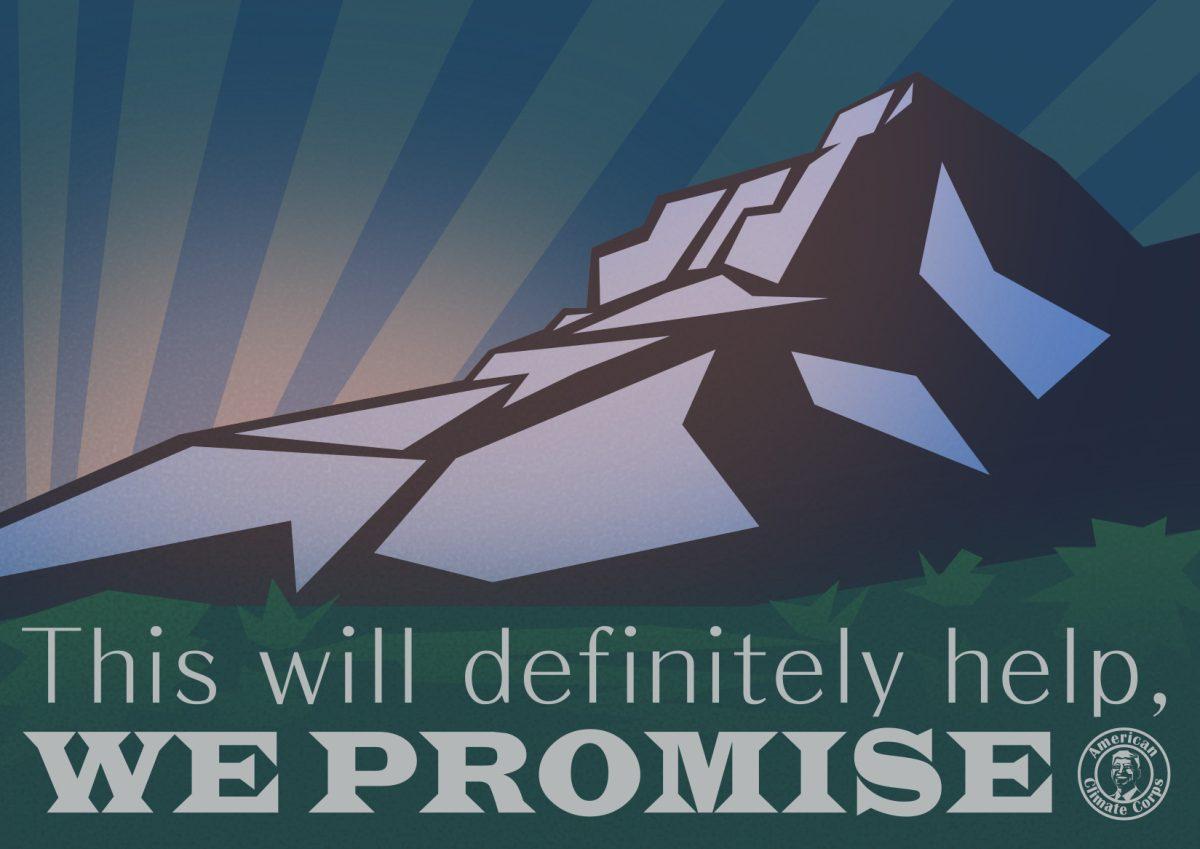President Joe Biden’s new American Climate Corps program, announced Sept. 20, plans to put thousands of young Americans to work in the “clean energy economy” to combat climate change. But despite all the celebratory press, us college students shouldn’t get our hopes up, because this program won’t solve our problems — from job security to climate change. Like practically every other contemporary federal policy, it’s too little, too late.
Biden’s Climate Corps is named and styled after President Franklin D. Roosevelt’s Depression-era Civilian Climate Corps, which put Americans to work on federal land. But when compared on material factors, Biden’s looks utterly insignificant. FDR’s program mobilized several hundred thousand Americans into action within months, while the lofty goals of Biden’s plan encompass 20,000 total workers, an order of magnitude less. Like it or not, the U.S. will have to put far more than 20,000 young people into green jobs for us to reach net-zero carbon emissions by 2050, as per the Paris climate agreement. Millions of Americans and significant economic sectors will need to reorganize. Touting 20,000 jobs as a groundbreaking victory when the U.S. a century ago was able to do far more with far less feels sickeningly cheap. The world’s richest nation shouldn’t be impressed by such paltry figures.
Climate Corps supporters may argue Biden’s administration is well on its way to manifesting net-zero, pointing to huge climate programs like the Inflation Reduction Act passed in August 2022, but even this is suspect. Optimistic figures suggest this act will cause U.S. emissions to lower to pre-2005 levels after a decade, but emissions were already unsustainably and damagingly high by then. We don’t need to turn back the clock by a few years — we need to fundamentally restructure everything. And Biden’s Climate Corps is far smaller than the Inflation Reduction Act. When the policy achievement of the decade can’t do the job regarding emissions, how can this aggrandized team of 20,000 twenty-somethings make a dent?
We must keep in mind, too, that crawling toward net-zero will only happen if the Biden admin’s policies stick around. American presidents love nothing more than undoing one another’s policy work: remember when Obama entered the Paris agreement, Trump withdrew and undid a lot of his climate policy, and then Biden reentered and had to rebuild? No long-term projects can happen if they keep being repealed or reshuffled every four years. FDR’s successful policies emerged from him holding office for 12 years straight, in an era where one party effectively controlled the presidency and undid predecessors’ work less. Biden doesn’t have anything like this going for him or his climate programs.
Instead, college students might look to Biden’s Climate Corps as an employment opportunity. It requires no particular degree and promises job security and fulfilling, “good-paying” work — but similar programs currently operating in the U.S., such as the California Conservation Corps, suggest questionable results. California’s current Corps is notorious for low wages and employs less than 2,000 people from a state population of 30 million. If Biden’s program employed the same percentage of Americans from the current 300 million population, that would be about 15,000 total jobs. If staunchly liberal California can’t turn its comprehensive, youth-focused climate program into economic meaning, then what hope does the politically-torn federal government have?
Election season charges ever closer, and incumbent Biden is begging for young votes via measures like these. He wants you to think you can be one of the rare 20,000, or that the number of Climate Corps employees will expand rather than dwindle into irrelevancy, or that this new project makes up for him approving the catastrophically bad Willow project — more climate-unfriendly Alaskan oil drilling — earlier this year. Don’t be fooled by gushing headlines or nicely-written projections for 2030. Every endeavor will be mangled by successive administrations or the program’s own inadequacy. FDR would weep at our contemporary notion of “sweeping change.”
Most pessimistically of all, we must remember: not even FDR could do it. Despite 12 years of presidency and his huge New Deal, his programs didn’t haul the U.S. out of depression. World War II did. Biden is facing down what’s likely the biggest existential threat since, and hasn’t mustered half the resources FDR did for this fight. Current federal policies like the Climate Corps simply will not achieve meaningful change. Unless a society-wide economic shakeup like a World War seizes us, we might not achieve it before it’s too late. 2050 is our deadline, and it draws ever-near, but all the Climate Corps in the world won’t help us win.
This program isn’t your future job. This program isn’t our nation’s savior. Come election season, raise your votes and voices for climate policy to make the New Deal look small. The last thing we should do right now, in the home stretch of this climate nightmare, is settle for a meager 20,000.






